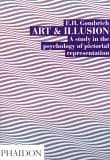
Book Review Summary: Art and Illusion: A Study in the Psychology of Pictorial Representation
Introduction
"Art and Illusion: A Study in the Psychology of Pictorial Representation" by E.H. Gombrich is a groundbreaking book that delves into the history and psychology of pictorial representation. Gombrich explores the complexities of art and offers insights into the reasons behind different styles and artistic choices. This article provides a comprehensive review of the book, analyzing its main themes, examining readers' opinions, and summarizing the reasons for both recommendations and not recommendations.
About E.H. Gombrich
E.H. Gombrich, also known as Sir Ernst Hans Josef Gombrich, was an Austrian-born art historian who spent most of his working life in the United Kingdom. His extensive knowledge and exceptional gift for clear exposition make him a renowned figure in the field of art history. Gombrich's work, including "Art and Illusion," has had a significant impact on the understanding of art and its representation.
Analysis of Views
- The Role of Artists and Viewers: Gombrich emphasizes the interplay between artists and viewers in the creation and interpretation of art. Artists employ a repertoire of conventions that viewers have learned to interpret as realistic representations. This highlights the role of both the artist as the presenter and the viewer in understanding and interpreting visual images.
- Western Art vs. Asian Art: Gombrich also explores the differences between Western art and Asian art, particularly in their philosophies regarding representation. He argues that seeing is interpreting, and there is no way to portray exactly what is seen without interpretation. Art has developed to provide possible interpretations that make paintings appear realistic, using a series of tricks.
- Groundbreaking Contribution: Readers praise Gombrich's groundbreaking contribution to the study of visual images. They describe the book as intellectually exploratory and rigorous, offering new insights into traditional ideas about looking at art. The author's ability to analyze art using different theories in visual psychology, combined with his in-depth analysis of viewers, makes this book a valuable resource for anyone interested in understanding the complexities of art.
- Accessibility and Relevance: While acknowledging that the book can be challenging at times, readers generally find it accessible and relevant. They appreciate Gombrich's ability to present complex ideas in a clear and engaging manner, making it suitable for both artists and non-artists alike. The book's relevance extends beyond art history, touching on topics such as perception, illusion, and human cognition.
- Criticisms: Some readers express concerns about Gombrich's understanding of child cognitive development and his tendency to homogenize human history. They argue that the book's focus on European art limits its applicability to a broader context. Additionally, some find the book difficult to take seriously as a work of art philosophy or scholarly work due to its perceived lack of contextualization.
Reasons for Recommendation
- In-depth Analysis: Readers recommend "Art and Illusion" for its in-depth analysis of various aspects of art, including the role of artists and viewers, the influence of different styles, and the psychology behind visual perception. The book provides a comprehensive understanding of the complexities involved in creating and interpreting art, making it a valuable resource for anyone interested in the subject.
- Clear Explanation: Gombrich's exceptional gift for clear exposition is highly praised by readers. His ability to present complex ideas in a concise and accessible manner makes the book enjoyable to read and understand, even for those with limited knowledge of art history or visual psychology.
- Groundbreaking Contribution: The groundbreaking nature of Gombrich's work is a significant reason for recommending this book. His insights into the history and psychology of pictorial representation have contributed significantly to our understanding of art and its representation, making it a must-read for anyone interested in exploring these topics further.
Reasons for Not Recommendation
- Lack of Contextualization: Some readers find that Gombrich's focus on European art limits the book's applicability to a broader context. They argue that a more inclusive approach that considers non-European artistic traditions would have enriched the book's perspective and made it more relevant to a global audience.
- Challenging Content: While acknowledging that "Art and Illusion" is an intellectually stimulating book, some readers express difficulty in fully engaging with its content due to its challenging nature. The book requires attention and thought, which may make it less accessible to those seeking a more straightforward introduction to art philosophy or scholarly works.
Conclusion
"Art and Illusion: A Study in the Psychology of Pictorial Representation" by E.H. Gombrich is a thought-provoking book that delves into the complexities of artistic representation. Through his exploration of historical periods, artists, and theories in visual psychology, Gombrich offers insights into why there are so many different styles in art throughout history. While some readers find the book challenging due to its dense content, others appreciate its groundbreaking contribution to our understanding of art and visual perception. Overall, "Art and Illusion" remains an essential text for anyone interested in exploring the complexities of art and its representation.